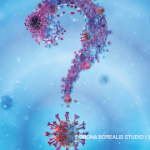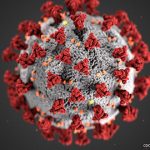
Advances in bioengineering are making it possible to develop therapies with molecules that can bind to more than one target.
Antibody-like molecules that can bind to more than one target—with the goal of having a more powerful effect than if those targets were treated separately in a combination of therapies—could become part of treatment regimens in rheumatic diseases over the next several years, an expert said here in a session at EULAR 2015, the annual congress of the European League Against Rheumatism (EULAR).
Advances in the bioengineering of these molecules, now most commonly seen in cancer treatment, have made development of potential therapies more feasible, with several companies now developing drugs that might be able to be applied in such diseases as pulmonary fibrosis, psoriatic arthritis and osteoarthritis, said Mark Throsby, PhD, chief scientific officer at Merus Biopharmaceuticals, based in The Netherlands.
“These are becoming easier to make in the therapeutic or drug-like setting,” Dr. Throsby said. “There are many companies now that have the tools to really bring these forward.”
In Development
Rather than aiming at one target and the biology surrounding that target, bispecific antibodies offer the possibility of combining two different targets and getting novel modes of action.
Merus’ Biclonics are bispecific, full-length human IgG antibodies developed for use in cancer immunotherapy. Bispecifics have been developed to block two checkpoint inhibitors at once; to block one checkpoint inhibitor and provide a co-stimulatory signal, in a “release the brakes and push on the accelerator” approach; and to target an overexpressed signaling receptor and an immunomodulatory pathway, Dr. Throsby said.
AbbVie and Sanofi are in Phase 2 clinical trials with several bispecific antibodies—for example, one that blocks TNF and IL-17, another that blocks IL-1 alpha and IL-1 beta, and one that blocks IL-4 and IL-13. Dr. Throsby said it will be interesting to see how the body reacts to these therapies, because they are different from naturally occurring IgG antibodies.
“I think one of the key things to look for would be immunogenicity, because this is not looking exactly like an IgG, and immunogenicity is very difficult to tease out in preclinical studies,” Dr. Throsby said.
Macrogenics and Takeda have teamed up on the development of a bispecific antibody targeting CD32B and CD79B for a B cell-targeted therapy that doesn’t lead to B cell depletion. This is being studied for potential use in RA and systemic lupus erythematosus, and is also in Phase 2.

